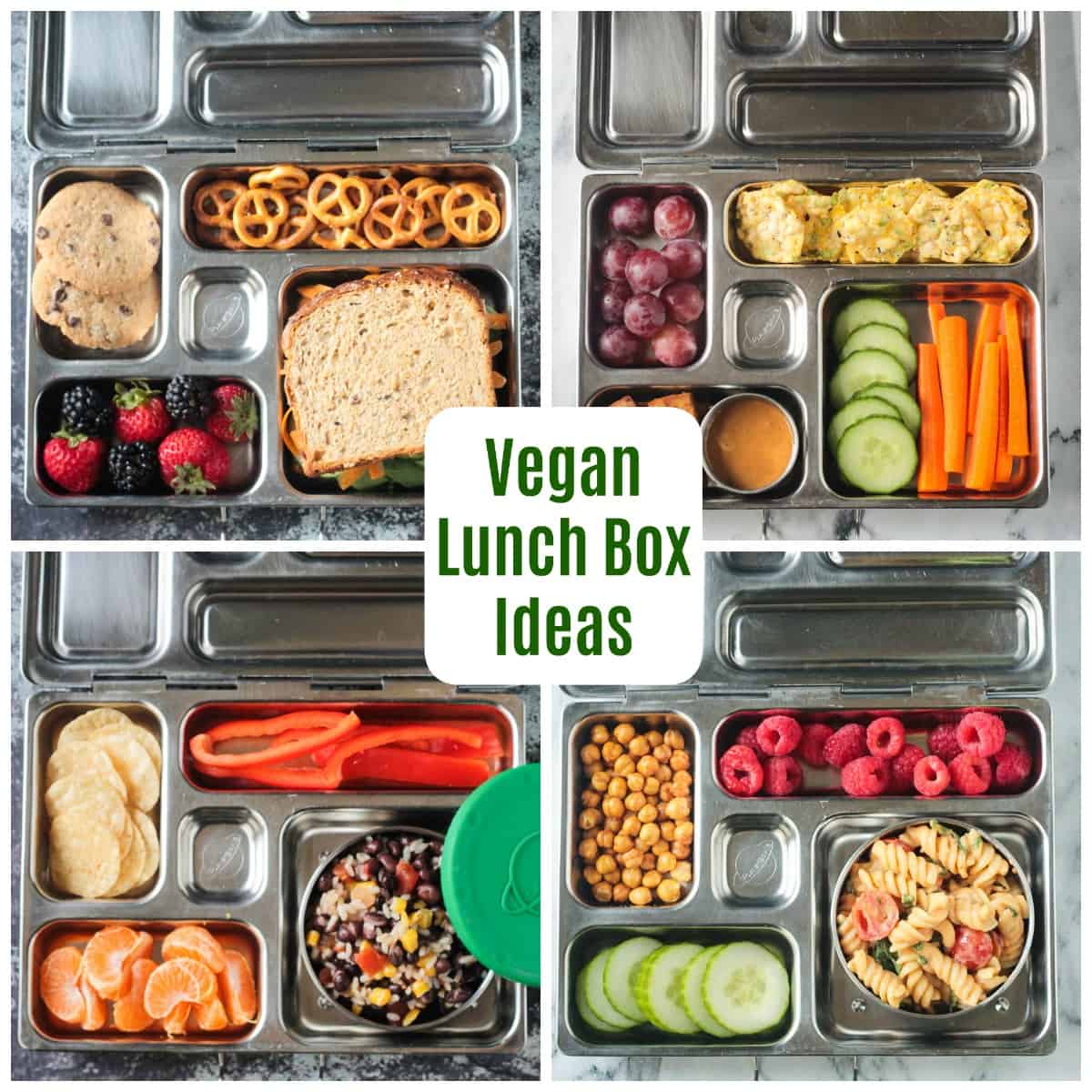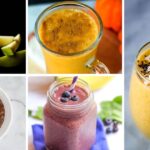Unleash your inner artist and nourish your body with vibrant, delicious vegan bento boxes! This guide dives into the delightful world of creating fun, healthy, and visually stunning lunches, perfect for busy weekdays or exciting picnics. We’ll explore a rainbow of colorful ingredients, inventive vegan protein sources, and creative arrangement techniques to transform your lunchtime routine into a work of edible art. Prepare to be inspired by a plethora of recipes and step-by-step instructions, transforming ordinary lunches into extraordinary culinary adventures.
From mastering the art of perfectly packed bento boxes to discovering unusual yet delicious vegan ingredients, this comprehensive guide equips you with the knowledge and inspiration to craft exciting and nutritious vegan meals. Learn how to balance flavors and textures, preserve freshness, and even adapt recipes to suit various dietary needs. Get ready to elevate your lunch game to a whole new level of creativity and deliciousness!
Vegan Protein Sources for Bento Boxes
Creating delicious and nutritious vegan bento boxes requires careful consideration of protein sources. A well-planned bento box provides a balanced meal, ensuring you stay energized and satisfied throughout the day. This section explores various high-protein vegan options perfect for your lunchbox, along with nutritional comparisons and sample weekly menus.
High-Protein Vegan Bento Box Components
Five recipes showcasing diverse and protein-rich vegan options, ideal for incorporating into your daily bento boxes, are detailed below. Each recipe is designed to be both flavorful and convenient to prepare.
- Tofu Scramble: Imagine a vibrant yellow scramble, bursting with flavor and texture. This recipe starts with crumbled firm or extra-firm tofu, sautéed with diced onions and bell peppers until softened. A splash of nutritional yeast adds a cheesy, umami note, while turmeric lends a sunny yellow hue. Season generously with black salt (kala namak) for an authentic eggy flavor. This scramble can be served warm or cold, making it a versatile addition to your bento box.
- Lentil Salad: Picture a medley of colorful lentils, vibrant red and earthy green, tossed with finely chopped cucumbers, juicy tomatoes, and crisp red onion. A lemon-herb vinaigrette, featuring fresh parsley and dill, brightens the salad with its zesty tang. The lentils provide a hearty base, complemented by the refreshing crunch of the vegetables. This salad can be made ahead of time, allowing for easy meal prepping.
- Chickpea Patties: These patties are golden-brown, crispy on the outside and soft on the inside. Mashed chickpeas form the base, seasoned with cumin, coriander, and a hint of chili powder for a warm, savory taste. Rolled oats add texture and help bind the patties together. These patties are perfect served warm or at room temperature, and can be paired with a variety of sauces or enjoyed on their own.
- Black Bean Burgers: These hearty burgers boast a deep, rich flavor. Black beans are mashed and combined with breadcrumbs, finely chopped red onion, and a blend of spices, including smoked paprika and garlic powder. These burgers are pan-fried until slightly crispy, achieving a delightful contrast in texture. They can be served on whole-wheat buns with your favorite toppings or enjoyed as a standalone component of your bento box.
- Edamame Salad: This salad is a vibrant green, showcasing the bright color of fresh edamame. Shelled edamame is gently tossed with a sesame ginger dressing, providing a subtle sweetness and a hint of spice. Toasted sesame seeds add a nutty crunch, enhancing the overall textural experience. This salad is refreshing and easy to prepare, making it a perfect addition to your bento box.
Nutritional Comparison of Vegan Protein Sources
Three common vegan protein sources – tofu, lentils, and chickpeas – offer distinct nutritional profiles. Tofu is a complete protein, meaning it contains all nine essential amino acids, and is relatively low in calories. Lentils are an excellent source of fiber and iron, contributing to digestive health and energy levels. Chickpeas are rich in protein and fiber, promoting satiety and aiding in blood sugar regulation. A balanced approach, incorporating a variety of these sources, ensures a complete amino acid profile and diverse micronutrients.
Sample Weekly Bento Box Menus
This section provides a sample weekly menu plan showcasing the versatility of vegan protein sources in bento boxes. Each day features a different combination of protein sources, alongside fruits, vegetables, and whole grains for balanced nutrition.
- Monday: Tofu scramble, mixed greens salad, whole-wheat crackers.
- Tuesday: Lentil salad, cucumber slices, apple slices.
- Wednesday: Chickpea patties, brown rice, steamed broccoli.
- Thursday: Black bean burger on a whole-wheat bun, sweet potato fries.
- Friday: Edamame salad, quinoa, cherry tomatoes.
Creative Vegan Bento Box Fillers
Creating vibrant and delicious vegan bento boxes requires careful consideration of both flavor and presentation. A successful bento box is a miniature feast for the eyes as well as the palate, offering a balanced and exciting array of textures and colors. The key lies in choosing ingredients that hold up well, complement each other, and remain appealing even after several hours.
Five Colorful and Flavorful Vegan Side Dishes
These recipes are designed to add visual appeal and nutritional value to your vegan bento boxes. They are easy to prepare and transport, ensuring your lunch remains both delicious and exciting.
- Rainbow Roasted Vegetables: Toss bite-sized pieces of broccoli, bell peppers (red, yellow, orange), carrots, and zucchini with olive oil, herbs (rosemary, thyme), and salt and pepper. Roast at 400°F (200°C) for 20-25 minutes until tender-crisp. The vibrant colors create a visually stunning component for your bento box. Imagine the deep green of the broccoli contrasting with the fiery orange of the peppers, all glistening with a light sheen of olive oil.
- Sweet and Spicy Peanut Noodles: Cook whole wheat noodles according to package directions. Toss with a vibrant peanut sauce made from peanut butter, soy sauce, rice vinegar, maple syrup, sriracha, and a touch of sesame oil. The glossy noodles, speckled with sesame seeds, provide a textural and flavorful contrast to other components.
- Mediterranean Quinoa Salad: Combine cooked quinoa with chopped cucumber, tomatoes, Kalamata olives, red onion, and fresh parsley. Dress with a lemon vinaigrette. The bright colors and refreshing flavors of this salad offer a light and healthy option, visually appealing with its medley of greens, reds, and purples.
- Pickled Ginger and Carrot Sticks: Thinly sliced carrots and ginger are quickly pickled in a mixture of rice vinegar, sugar, and a pinch of salt. The vibrant orange of the carrots against the pale pink of the ginger creates a beautiful visual contrast. The tangy and slightly sweet flavor adds a delightful zing.
- Edamame with Sea Salt: Steamed edamame pods, sprinkled with sea salt, offer a simple yet satisfying side dish. The bright green of the pods, punctuated by tiny grains of glistening salt, provide a visually appealing and healthy addition to your bento.
Preserving Freshness and Quality of Vegan Bento Box Ingredients
Maintaining the freshness and quality of your bento box contents is crucial for both taste and safety. Here are three effective methods:
- Proper Packaging: Use airtight containers to prevent spills and maintain freshness. Separating wet and dry ingredients is also important to prevent sogginess. For example, keep roasted vegetables separate from a dressing or sauce until lunchtime. Visualize the crispness of your vegetables preserved within their individual compartments, maintaining their texture and color throughout the day.
- Temperature Control: For perishable items like salads or cooked grains, using an insulated lunch bag with an ice pack is recommended, especially during warmer months. Imagine your salad staying refreshingly chilled, its vibrant colors undimmed by the heat.
- Strategic Ingredient Selection: Choose ingredients that naturally hold up well at room temperature, such as roasted vegetables, certain fruits, and well-seasoned grains. The textures and flavors of these ingredients are less prone to deterioration compared to delicate items.
Five Unusual Yet Delicious Vegan Ingredients for Bento Boxes
These ingredients add a unique flair and unexpected flavors to your vegan bento boxes, moving beyond the typical choices.
- Hearts of Palm: These offer a unique crunchy texture and mild flavor, perfect for salads or as a standalone snack. Imagine the crisp snap of the hearts of palm as you bite into them, a delightful contrast to softer elements in the bento box.
- Black Rice: Its deep purple hue and slightly nutty flavor make it a visually striking and nutritious addition to your bento box. Picture the glistening, almost jewel-toned grains, contrasting beautifully with other ingredients.
- Shiitake Mushrooms: Their earthy umami flavor adds depth to any dish. Imagine the rich, savory taste complementing other elements in the bento, a textural and flavorful surprise.
- Roasted Sweet Potatoes: Their natural sweetness and vibrant orange color add a burst of flavor and visual appeal. Imagine the soft, caramelized texture and intense sweetness providing a satisfying contrast to other components.
- Sun-dried Tomatoes: Their intense flavor and chewy texture provide a unique element to salads or grain bowls. Imagine the concentrated sweetness and tanginess of the sun-dried tomatoes, a burst of flavor within the bento.
Step-by-Step Guide to Assembling a Vegan Bento Box

Creating a visually appealing and nutritionally balanced vegan bento box is easier than you think! This guide will walk you through the process, offering techniques to ensure your delicious and healthy lunch stays intact and looks fantastic. We’ll cover three different packing methods to prevent crushing and spills, and highlight the benefits of eco-friendly containers.
Preparing Your Ingredients
Before assembling your bento box, ensure all your ingredients are prepared. This includes cooking grains like quinoa or rice, chopping vegetables into bite-sized pieces, and preparing any sauces or dressings. Imagine a vibrant spread: perfectly cooked edamame pods glistening slightly, chunks of colorful bell peppers, and a small mound of fluffy brown rice, each ready to be carefully placed. Having everything prepped streamlines the assembly process and prevents last-minute rushes.
Three Techniques for Packing a Bento Box
The key to a successful bento box is preventing food from crushing or spilling. Here are three effective techniques:
Layer Packing
This technique involves layering the ingredients in your bento box. Start with the heavier items at the bottom (like rice or quinoa), followed by firmer vegetables (carrots, cucumbers), and finally, softer items (like tofu or avocado) on top. Imagine a bento box where a base of vibrant purple quinoa is topped with a layer of neatly arranged slices of orange carrots, and finally a sprinkle of finely chopped fresh cilantro. This prevents softer foods from being squashed.
Compartmentalization
Utilize the compartments within your bento box to separate different food items. This is particularly helpful for preventing sauces from mixing with dry ingredients. Picture a bento box with three compartments: one holding a colorful salad with a lemon vinaigrette dressing in a small separate container, another filled with hearty lentil stew, and the third with crispy baked chickpeas. Each component maintains its individual texture and flavor.
Utilizing Silicone Cups and Dividers
Silicone cups and dividers are excellent for keeping food separated and preventing spills. They’re especially useful for sauces, dressings, and wet ingredients. Visualize a bento box where a small silicone cup holds a vibrant mango salsa, nestled amongst cubes of firm tofu and a bed of mixed greens. The silicone cup acts as a barrier, preventing the salsa from seeping into the other ingredients.
Benefits of Reusable and Eco-Friendly Containers
Using reusable and eco-friendly containers for your vegan bento boxes offers several advantages. These containers are often made from durable materials like stainless steel or BPA-free plastic, ensuring longevity and reducing waste. Imagine a sleek stainless steel bento box, gleaming with a subtle sheen, packed with a colorful array of vegan delights. It’s a stylish and sustainable choice that minimizes your environmental impact compared to single-use plastic containers. Moreover, reusable containers are often easier to clean and maintain, promoting hygiene and convenience.
Creating fun and flavorful vegan bento lunches is more than just packing a meal; it’s an opportunity to express your creativity and prioritize your well-being. By mastering the techniques and recipes shared in this guide, you’ll not only enjoy delicious and nutritious lunches but also discover a fulfilling and artistic outlet. So, gather your ingredients, unleash your inner chef, and embark on a culinary journey filled with vibrant colors, exciting flavors, and the satisfying joy of crafting your own edible masterpieces. Bon appétit!
FAQ Overview
Can I prepare bento boxes in advance?
Absolutely! Many components can be prepped the night before or even earlier in the week. Focus on ingredients that hold up well and use proper storage techniques to maintain freshness.
What kind of containers are best for bento boxes?
Reusable, leak-proof containers made from sustainable materials like bamboo or stainless steel are ideal. Choose compartments of varying sizes for optimal food organization.
How do I prevent soggy sandwiches in my bento box?
Pack sandwiches separately, using parchment paper or reusable silicone wraps to keep them crisp. Consider using heartier breads that hold their shape better.
Are there any tips for making bento boxes appealing to children?
Use cookie cutters to create fun shapes from fruits and vegetables. Involve children in the packing process to increase their excitement and engagement.


